Unavoidable happiness on the trail, a whole new riding experience and one burning question: is it even an eMTB? With a new motor and an impressive weight of 16.9 kg, the brand new Specialized S-Works Levo SL 2020 paves the way for a brand new type of eMTB. We were the only magazine worldwide to be given the exclusive opportunity to test the new Turbo Levo SL for a couple of weeks before its official release. Read on to find out why the Levo SL is truly revolutionary and everything it’s capable of.

After Specialized introduced the Creo SL electric road bike (Click for review) with its compact Turbo SL 1.1 motor in summer 2019, we had an inkling that there might be an eMTB based on a similar concept around the corner. Ta-dah – here it is!
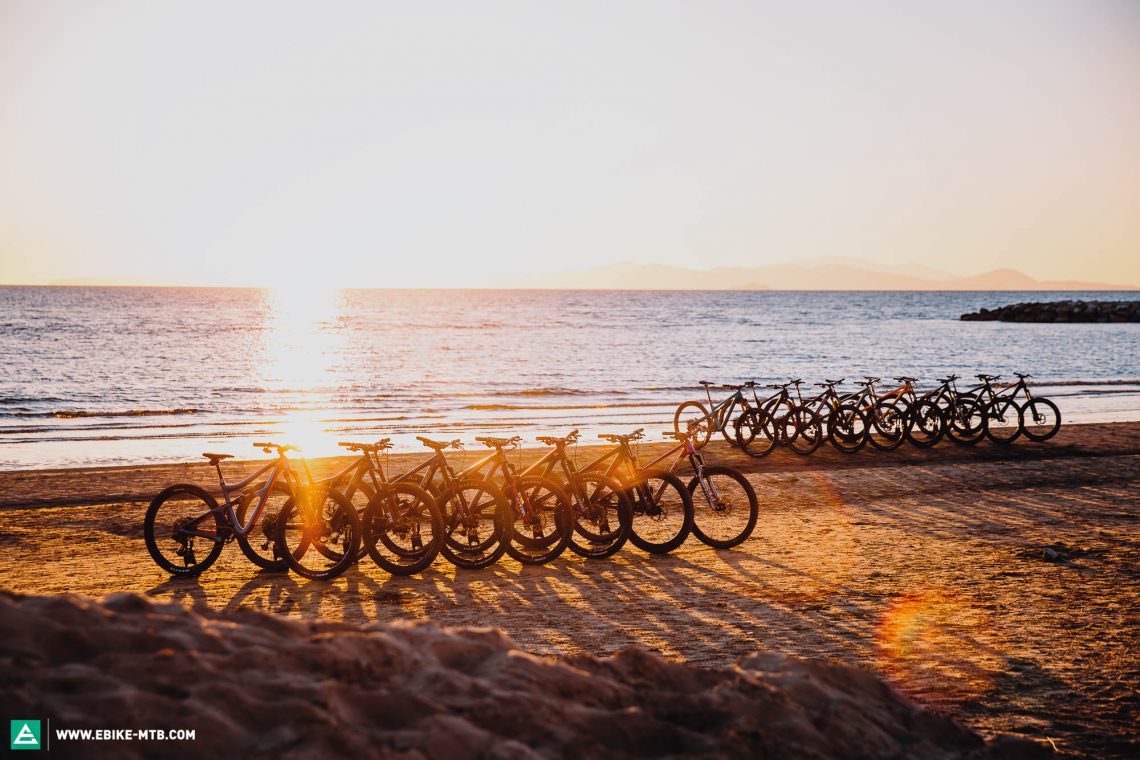
“Revolutionary” is one of the most overused adjectives in our industry. However, we have to admit that in this case the new Specialized Levo SL probably deserves that description and might be the biggest and most important news of the year in the mountain bike sector. We had the exclusive opportunity to test the Levo SL for a whole two months, in various exciting locations around the globe – from Germany to Italy and all the way to South Africa! In the big 2020 trail bike group test of our sister magazine ENDURO, we pitted the new Levo SL Expert against 14 of the most popular analogue mountain bikes of the season: it didn’t take us long to realise that the new Levo SL is capable of slaying most normal push bikes, all while taking eMTBing to a whole new level.

Why is the Specialized Levo SL so special?
When Specialized’s development team, led by Marco Sonderegger and Jan Talavasek launched the first-generation Levo, they quickly found themselves asking how much lighter the Levo could be without the Turbo mode? That’s exactly how four years ago, the team started its search for the perfect compromise of motor power and battery size. However, the goal of building a much lighter bike shouldn’t affect its range. The result? The new 320 Wh battery and SL 1.1 motor weigh just as much as the 700 Wh battery of the current Levo alone. “It wasn’t about reinventing the eMTB but the mountain bike itself,” says Senior Product Manager Turbo. Marco Sonderegger during the official launch in Stellenbosch, South Africa. It’s important to understand that the Levo SL is not meant to replace the current Levo, but complement the range and open up new possibilities.
After our exclusive test of the Lapierre eZesty (Click for review) last year, and more recently the Nox Helium (Click for review), also with a FAZUA drive, we quickly recognised the potential of lightweight eMTBs with a little less support and were excited to see the technical solutions the Specialized team would come up with. As our 2019 E-MOUNTAINBIKE reader survey with more than 10,000 participants showed, there is clearly a market for lighter, less powerful eMTBs. After all, only about 5% of our readers claimed to be mainly using the strongest support level of their motor. On the other hand, 53% of them are usually in frugal Eco and Tour modes and never resort to the maximum support level!
The Specialized Levo SL 2020 in detail: frame design, geometry and features
With its compact motor and a slim, fully integrated 320 Wh battery hiding in the downtube, the Levo SL has a very harmonious design and balanced proportions. At first glance, it could be mistaken for its analogue counterpart, the Specialized Stumpjumper. The SL shares similar features and design with the Levo and Stumpjumper, such as the asymmetrical frame design featuring the iconic stiffening sidearm. Only when you take a few steps closer, will you notice that it’s actually an eMTB.
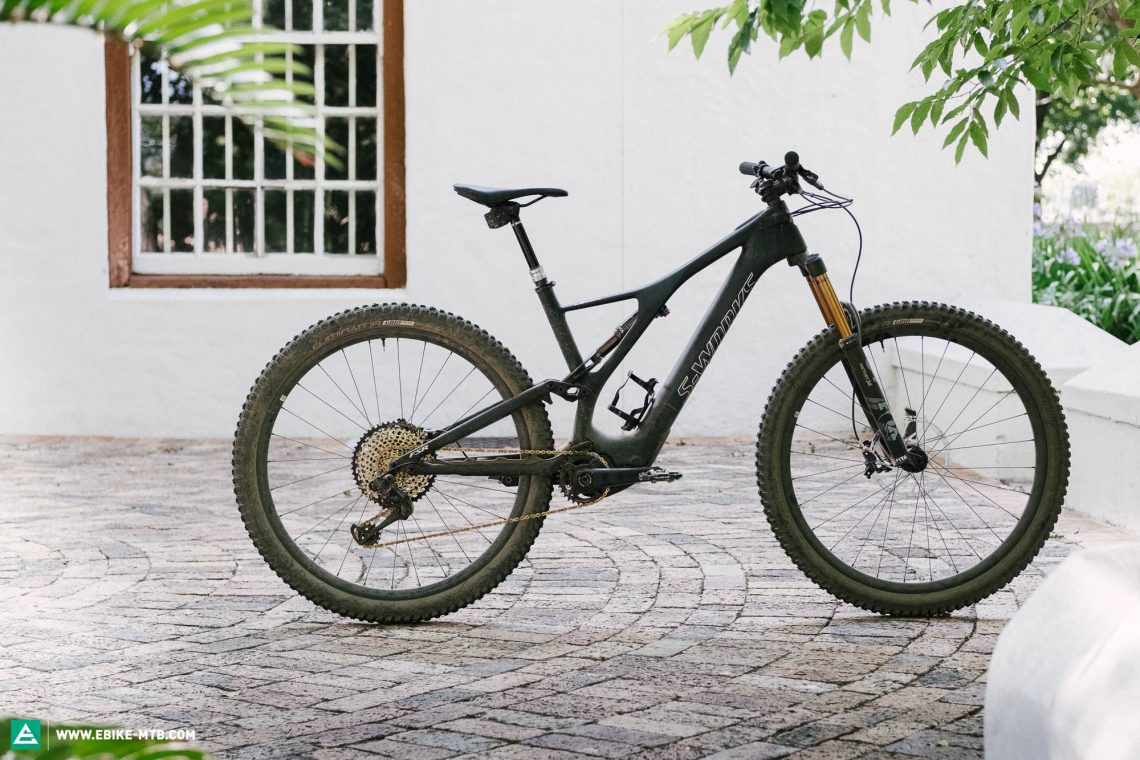
Like the Levo, the SL features 29” wheels and 150 mm of travel, both front and rear. Moreover, the bikes also share similar geometry except for the chainstays. As the SL 1.1 motor is significantly smaller than the 2.1 drive of the Levo, Specialized ‘s engineers were able to achieve the same chainstay length as the Stumpjumper on the new Levo SL. The reduced bulk of the SL 1.1 motor also allows a suspension pivot point that sit lower, modifying the axle path.
| Größe | S | M | L | XL |
|---|---|---|---|---|
| Seat tube | 390 mm | 410 mm | 455 mm | 505 mm |
| Top tube | 574 mm | 597 mm | 629 mm | 663 mm |
| Head tube | 95 mm | 95 mm | 125 mm | 140 mm |
| Head angle | 66° | 66° | 66° | 66° |
| Seat angle | 75.3° | 75.0° | 74.6° | 74.2° |
| Chainstays | 437 mm | 437 mm | 437 mm | 437 mm |
| BB Height | 348 mm | 348 mm | 348 mm | 348 mm |
| Wheelbase | 1,165 mm | 1,185 mm | 1,217 mm | 1,248 mm |
| Reach | 415 mm | 435 mm | 455 mm | 480 mm |
| Stack | 606 mm | 606 mm | 633 mm | 647 mm |
The Specialized SL 1.1 motor system of the Levo SL
At the heart of the new Specialized Levo SL sits the new Specialized SL 1.1 mid-motor drive, which delivers 35 Nm torque and provides a maximum power output of 240 watts. For reference, the Specialized 2.1 motor of the Levo and Kenevo churns out 90 Nm of torque and delivers up to 565 watts at maximum output. Whilst the Specialized 2.1 motor of the Levo was designed to combine maximum power with the most natural ride feeling possible, the idea behind the new SL 1.1 drive of the Levo SL was to create a super light system that wouldn’t feel too dissimilar to a conventional trail bike.

Thanks to the magnesium housing and the compact internal structure, the SL 1.1 motor weighs just 1.95 kg (manufacturer’s specification), making it around 1 kg lighter than the Specialized 2.1 motor.

But it’s not just the motor of the Levo SL that is lighter – the battery is too. As it uses significantly less power than its bigger brother, the motor can make do with a smaller ‘tank’. The mid-motor draws its power from a 320 Wh battery, which is fixed in the down tube. That can be augmented with an optional Range Extender, which expands the capacity by 160 Wh and weighs 1050 g. The compact Range Extender fits into the bottle cage and is connected via a cable to the charging socket of the Levo SL, located at the base of the seat tube. The Twist-Lock screw cap prevents the cable from coming loose on rough terrain, but it’s also advisable to use the included rubber band to keep the extra battery in place. The Range Extender can feed the motor either in parallel with the main battery, sequentially or on its own, without using the main battery at all.

Given the battery capacity arms race, 320 Wh plus the additional 160 Wh from the Range Extender might sound meagre. However, considering that the smaller motor delivers significantly less power and thus draws less electricity, a total capacity of 480 Wh is more than reasonable. So, while you’ll be riding slower, according to Specialized you should be able to ride for just as long as with the Levo, which has a battery capacity of over 700 Wh. This reminds us that at the very least since the introduction of this new generation of compact motors, that it no longer makes sense to look at figures in isolation and draw hasty conclusions.

Just as the more powerful Specialized 2.1 motor of the Levo, the SL 1.1 motor has three standard modes: Eco, Trail and Turbo, all of which can be freely customised via the Specialized Mission Control app, along with a walk assist too. Since the bike is significantly lighter than conventional eMTBs and the motor has virtually no internal resistance compared to other drives, the Levo SL remains fun to ride when the motor is turned off. But more importantly, the feel of the motor around the assistance limit (25 km/h in Europe) when the motor stops supporting you, is so much better: where other motors engage and disengage relatively abruptly, the SL 1.1 motor implements the transition from supported to muscle powered riding extremely smoothly.

If you’re blasting through the forest like a cheetah on speed, with Turbo mode pumping out zillions of Watts, when you suddenly hit the assistance limit and find yourself without the support of the motor, you’ll feel like you’re hitting a wall. While we tend to blame this sudden loss of power on the weight of the bike or strong internal resistance of the motor, this is only true for some bikes and motors. Nevertheless, the infamous “hit-a-wall-feeling” is mostly an illusion, a trick your mind plays on your sense of speed and strength. Just to give you an example, if you blast down the Autobahn at 200 km/h and suddenly enter a 30 km/h zone, you feel as if you’re crawling like a snail. On the other hand, if you turn from a residential road onto a motorway, you suddenly feel like you’re driving laps at the Nürburgring.
In order to reduce this “hit-a-wall-feeling” and achieve the most natural riding experience at the 25 km/h threshold, the SL 1.1 motor starts regulating the power much earlier than any current eMTB drive.
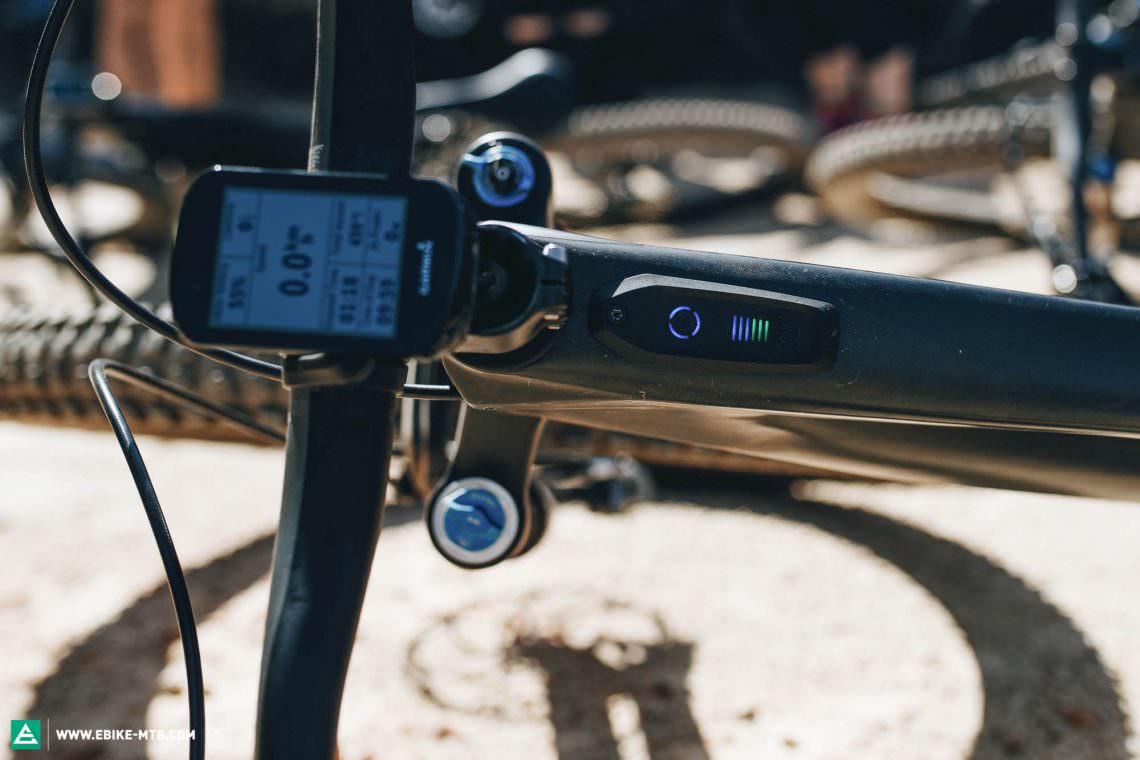


If you’re wondering why we haven’t mentioned Specialized’s hardware manufacturing partners Brose or Mahle, here is why: for the hardware of the SL 1.1 motor, Specialized have created their own ecosystem, relying on a team of over 30 experts to address crucial topics such as connectivity, motor software and app development. In terms of features, usability and riding performance, the system clearly differentiates itself from the manufacturers’ standard motors, being the product of a lot of co-development with Specialized. Alongside the motor tuning options, the ecosystem also includes the Turbo Connect Unit (TCU) and the Mission Control app.
The Specialized Mission Control App – exciting functions and effective customisation
Through the Mission Control app, you can customise the individual support levels (within the scope of legal regulations) and create your own presets for different scenarios.
We recommend you connect your bike to the Mission Control app and play around with the settings! We did and we noticed huge differences in the riding characteristics. The modes can be tweaked using two parameters: peak power and support. The peak power regulates the maximum power output the motor will deliver – the Levo SL has a maximum output of 240 watts. The support setting decides how hard you have to pedal to reach that peak. The time for the motor to ramp down when you stop pedaling can’t be adjusted on its own, but as this is linked to the support strength chosen, it can be regulated indirectly.

In addition, you can also perform bike diagnostics and check if the battery and motor are “healthy”. With the Smart Control function, you can control and optimise the range by specifying how many kilometers or how many hours you want to ride and how much juice you want to have left when you get to your destination. This feature modulates the power supplied by the battery in real-time to try and achieve the parameters you have set. The whole concept works very well. Only rides that start with long descents or extended flat sections and end with long climbs can cause some inconsistencies in the calculation. To be on the safe side, you can either set a higher remaining capacity or program a longer ride into your system. It would also be great (and probably be more accurate) if you could also include the vertical meters you’re planning to ride when setting the parameters. As there are more than 10 developers constantly working on the app there’s hope for updates and improvements.
One more interesting feature is the new Heart Rate Control function: just set your maximum heart rate and the Levo SL will automatically adjust the support level and prevent you from exceeding the level you’ve set. This can be a very important feature for controlled training and for riders with health issues or serious heart conditions.
Moreover, the app can be used to track rides and display useful and exciting info such as average support, calories and battery consumption.
How much does the Specialized S-Works Levo SL 2020 weigh? Weight is important, but not crucial!
The new S-Works Levo SL 2020 weighs in at 16.95 kg in size Large, making it almost 4 kg lighter than the S-Works Levo. On the other hand, the Levo SL also weighs 3.6 kg more than the Specialized S-Works SRAM AXS 29 Stumpjumper, which reads 13.32 kg on our scale. Nevertheless, if you’ve read the 11 eMTB trends and insights from our huge 2020 group test, which includes 25 of the most popular current eMTBs, you should know that isolated specs, including weight, mean very little or nothing without taking into account even more decisive factors, such as weight distribution and center of gravity.
All Specialized Levo SL 2020 models – weights, sizes and model recommendations
The Levo SL is now available from your local dealer in four configurations, with prices starting at € 5,999. The range includes three carbon models and one aluminum version. All models are available in four sizes – S, M, L and XL – and the Levo SL Comp Alloy also comes in an XS, making it an interesting option for both kids and shorter riders. The solid spec includes an aluminum wheelset, 12 speed SRAM NX Eagle groupset and FOX Rhythm 34 Float fork. The entry level version of the SL weighs in at 19.1 kg in size L. The bike with the most interesting price-performance ratio is perhaps the Levo SL Expert which retails at € 8,699 and forgoes a number of the bling components of the high-end S-Works version, like the FOX Factory suspension and expensive RockShox AXS dropper. In the latest trail bike group test of our sister magazine ENDURO, this model secured our coveted ‘Best Buy’ badge. At 17.7 kg, the Expert model weighs around 800 grams more than the S-Works model (in size L). If you need a spare Range Extender or if you own a Comp model which doesn’t come with one as standard, you’ll have to pay an extra €369.90. The connection cable for the Range Extender costs € 29.90.
Specialized S-Works Levo SL 2020
€ 12,999
Specifications
Motor Specialized SL 1.1 35Nm
Battery Specialized SL1 320 320Wh
Display Specialized TCU
Fork FOX 34 Factory FIT4 150 mm
Rear Shock FOX FLOAT DPS Factory 150 mm
Seatpost RockShox Reverb AXS 170 mm (L)
Brakes SRAM G2 Ultimate Vierkolben 200/180 mm
Drivetrain SRAM XX1 Eagle 1x12
Stem Syntace MegaForce 2 40 mm
Handlebar Specialized Trail Carbon 780 mm
Wheelset Roval Traverse SL Carbon 29"
Tires Specialized Butcher / Eliminator 2.3”
Technical Data
Size S M L XL
Weight 16,95 kg
Perm. total weight 130 kg
Max. payload (rider/equipment) 109 kg
Trailer approval no
Kickstand mount no
Specific Features
SWAT multi tool in the steerer tube

Specialized Levo SL Expert 2020
€ 8,699
Specifications
Motor Specialized SL 1.1 35Nm
Battery Specialized SL1 320 320Wh
Display Specialized TCU
Fork FOX 34 Performance FIT4 150 mm
Rear Shock FOX FLOAT DPS Performance 150 mm
Seatpost X-Fusion Manic 150 mm (L)
Brakes SRAM G2 RSC Vierkolben 200/180 mm
Drivetrain SRAM GX Eagle 1x12
Stem Specialized Trail 40 mm
Handlebar Specialized Trail Alloy 780 mm
Wheelset Roval Traverse Carbon 29"
Tires Specialized Butcher / Eliminator 2.3”
Technical Data
Size S M L XL
Weight 17,70 kg
Perm. total weight 130 kg
Max. payload (rider/equipment) 109 kg
Trailer approval no
Kickstand mount no
Specific Features
SWAT multi tool in the steerer tube

Specialized Levo SL Comp 2020
€ 7,299
Specifications
Motor Specialized SL 1.1 35Nm
Battery Specialized SL1 320 320Wh
Display Specialized TCU
Fork FOX 34 Rhythm GRIP 150 mm
Rear Shock FOX FLOAT DPS Performance 150 mm
Seatpost X-Fusion Manic 150 mm (L)
Brakes SRAM Guide R Vierkolben 200/180 mm
Drivetrain SRAM NX Eagle 1x12
Stem Specialized Trail 40 mm
Handlebar Specialized Trail Alloy 780 mm
Wheelset Roval Traverse 29"
Tires Specialized Butcher / Eliminator 2.3”
Technical Data
Size S M L XL
Weight n/a
Perm. total weight 130 kg
Max. payload (rider/equipment) 109 kg
Trailer approval no
Kickstand mount no
Specific Features
SWAT multi tool in the steerer tube


Specialized Levo SL Comp Alu 2020
€ 5,999
Specifications
Motor Specialized SL 1.1 35Nm
Battery Specialized SL1 320 320Wh
Display Specialized TCU
Fork FOX 34 Performance FIT4 150 mm
Rear Shock FOX FLOAT DPS Performance 150 mm
Seatpost X-Fusion Manic 150 mm (L)
Brakes SRAM Guide R Vierkolben 200/180 mm
Drivetrain SRAM NX Eagle 1x12
Stem Specialized Trail 40 mm
Handlebar Specialized Trail Alloy 780 mm
Wheelset Roval Traverse 29"
Tires Specialized Butcher / Eliminator 2.3”
Technical Data
Size S M L XL
Weight n/a
Perm. total weight 130 kg
Max. payload (rider/equipment) 109 kg
Trailer approval no
Kickstand mount no
Specific Features
SWAT multi tool in the steerer tube


Utterly gorgeous and sinfully expensive – the Specialized Levo SL Founder’s Edition is limited to 250 units and features a special finish, custom saddle, SRAM AXS groupset, titanium bolts, rainbow cassette and two range extenders! Specialized is selling € 14,999 version on a first come, first serve basis – you’ve got to be quick!


Exclusive test of the Specialized S-Works Levo SL 2020 – next level eMTBing?
First things first. We’ve rarely tested a bike before its official release as extensively as the new Specialized Levo SL. We took it from the muddy trails of southern Germany, through the rocky hills of Tuscany all the way to the dry and dusty singletrack of South Africa, some of which you might recognise from the Cape Epic. Over a period of two months, a total of ten ENDURO and E-MOUNTAINBIKE editorial staff were able to get familiar with the bike, test it and play around with all the motor set-ups and app functions. In the end, we all agreed.There’s no “love it or hate it” nonsense with the Levo SL. With this bike, the motto is “understand it”.
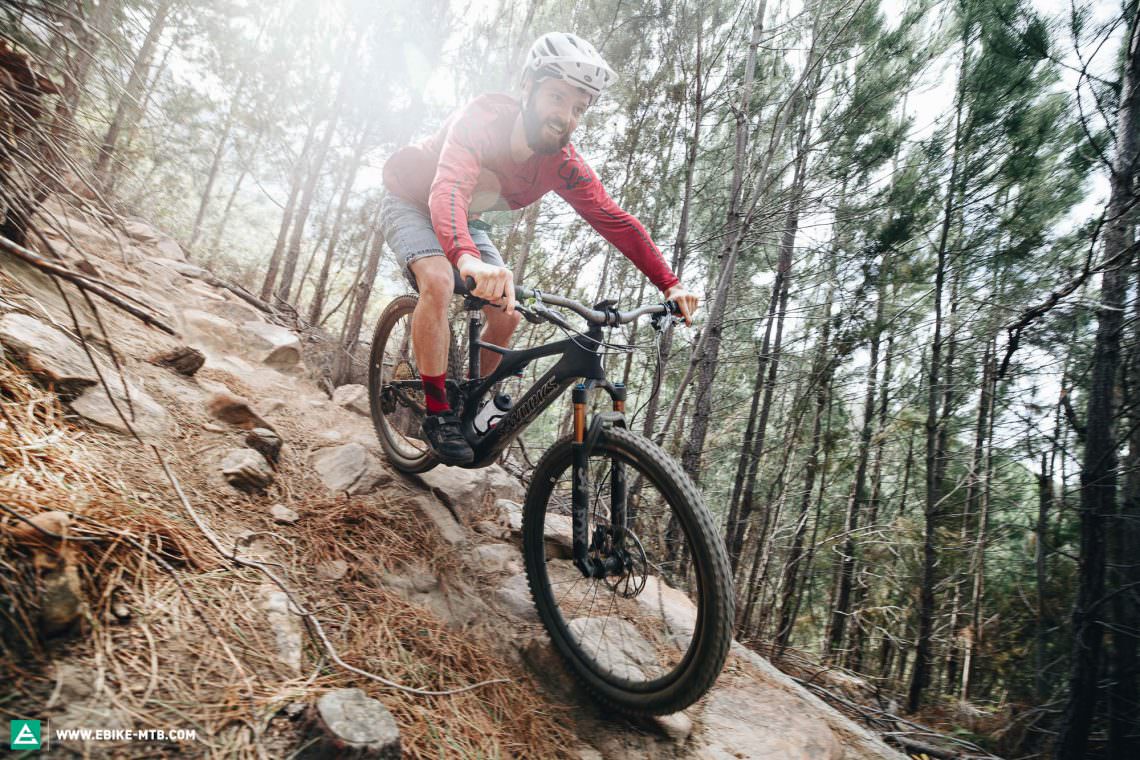
When we first rode the Specialized Levo SL on our home trails around Stuttgart in December 2019, we weren’t too sure about it and initially complained about the lack of motor power and the missing eMTB power we were used to. But riding the Levo SL against 14 of the hottest and best trail bikes in our ENDURO trail bike group test in Massa Vecchia, Italy, we were thrilled! And then, at the official launch in Stellenbosch, South Africa, we found that the maximum support level was even too much at times. So, did we get it all wrong the first time around? Or did we just get used to the bike and change our attitude towards it? It’s not as simple as that. The problem is that when we first rode the Levo SL on our muddy home trails with long transfers between descents, we judged the bike’s performance based on its power, comparing it against conventional eMTBs with more powerful motors à la Bosch, rather than focusing on how naturally the bike handles on the trail. And that’s exactly where the Levo SL is so different from everything else!

The motor and uphill performance of the Specialized S-Works Levo SL 2020
The new Specialized Levo SL is more than a compromise between a Levo and a Stumpjumper. It’s a whole new approach to both eMTBing and mountain biking. It’s a new riding experience. It’s up to you to decide whether you like it or not – after all we all have our own expectations and conceptions of whether we are analogue or electric mountain bikers, but the Levo SL does a very good job of blurring those boundaries.

We’ve already mentioned how speed perception is subjective at the 25 km/h threshold. The same phenomenon applies to the Levo SL in its entirety – if you’re used to powerful motors from Bosch, Brose and Shimano, which churn out over 500 Watts and 70 Nm torque, the Levo SL will feel tame at first. A rough guide: the most powerful support mode of the Levo SL corresponds approximately to the Tour mode of the new Bosch Performance CX or the Eco of the Specialized Levo. On the other hand, if you’re used to riding to the top of the hill solely with the power of your legs, the Levo SL makes you feel like you’re on steroids.

As far as the motor’s responsiveness goes, the Specialized SL 1.1 is very sensitive and reacts quickly. The engagement angle of the cranks for the motor to deliver its power is small, yet always easy to control. In Eco and Sport modes the drive stays subtle while delivering enough power to propel you onwards a little quicker. In the highest support level, the motor pushes strongly but you don’t have to cling onto the bars like with the Levo, which churns out twice as much power. Even small tweaks in the Mission Control app make a remarkable difference. With 95% support and 100% peak performance, the Turbo mode still pulls strong, but is a little more sensitive and a little less pushy. On gentle gradients, you can still let the motor carry you uphill without making too much of an effort yourself.

However, the steeper the climb gets, the more evident it becomes that the motor has 35 Nm and not 90 Nm of torque. Of course, heavier riders will notice this a lot sooner than most of us. The same applies to muddy conditions, where soggy terrain can swallow up a significant amount of energy. On steep technical climbs, you’ll have to work hard even when using a high support level and pick your lines carefully as well as shifting gears more frequently than with a more powerful motor. We also recommend using the climb switch of the FOX FLOAT DPS Factory Shock to cruise through the terrain with even more precision and prevent the rear end from packing down. While with most current eMTB drives the power of the motor can compensate for poor gear choices, the new motor of the Levo SL reaches its limits a lot sooner.

Our favourite setting which we used most of the time (except for sections with strong headwinds and really steep gravel paths): 35% support, 100% peak power.

The SL 1.1’s performance at the 25 km/h threshold is without equal. The transition from supported to muscle powered riding is the best that we have ever experienced! When riding on flat trails, sometimes you won’t even notice that you’re riding without support, feeling like you’re blasting around on a solid enduro rig. The only reminder will be the Specialized motor buzzing in the background, which can be quieter or not depending on the support level and the gear you’re riding in. In a direct comparison, it’s not any quieter than larger motors such as the Shimano or Brose.

Light, smooth, Levo SL – are there still reasons to ride an analogue mountain bike?
Once you turn your nose downhill, you’re in for a big surprise. You’ll be truly overwhelmed by how rowdy you can get on this thing. With its new motor concept, the S-Works Levo SL delivers a completely new eMTB experience: it’s a lot smoother, livelier and less tiring on flowy trails.
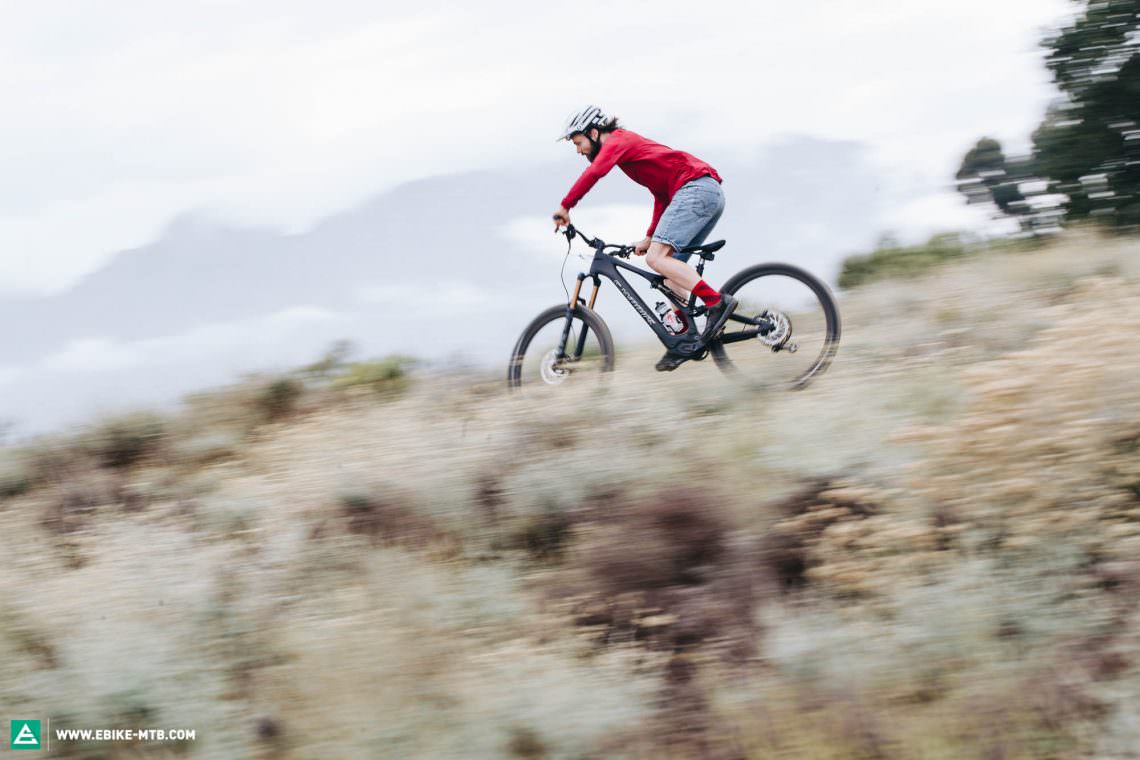
The riding position of the Levo SL is nicely centred and well balanced. It provides precise, sporty and good-natured handling that will forgive small mistakes. Considering that this is a 29” eMTB, the Levo SL has super short chainstays, which are partly responsible for the bike’s lively character. A huge perk: thanks to the smooth transition at the 25 km/h threshold, you won’t experience the dreaded “hit-against-a-wall” feeling you get with most eMTBs when riding on flat trails. If you’re used to riding conventional trail bikes, you don’t have to spend time adjusting to the Levo SL. Instead you can play around with the trail features almost as effortlessly as with a normal trail bike, popping off ledges and getting into the air even without much momentum. That’s in stark contrast to many conventional eMTBs where you need way more momentum and power to ride actively! The Levo SL doesn’t feel cumbersome at all, with an insane amount of cornering grip that delivers an intense riding experience while inspiring tons of confidence and offering a secure ride. If you want to know how the Levo SL performed against 14 of the most popular trail bikes, head over to the huge, visionary group test of our sister magazine ENDURO (Click for review).
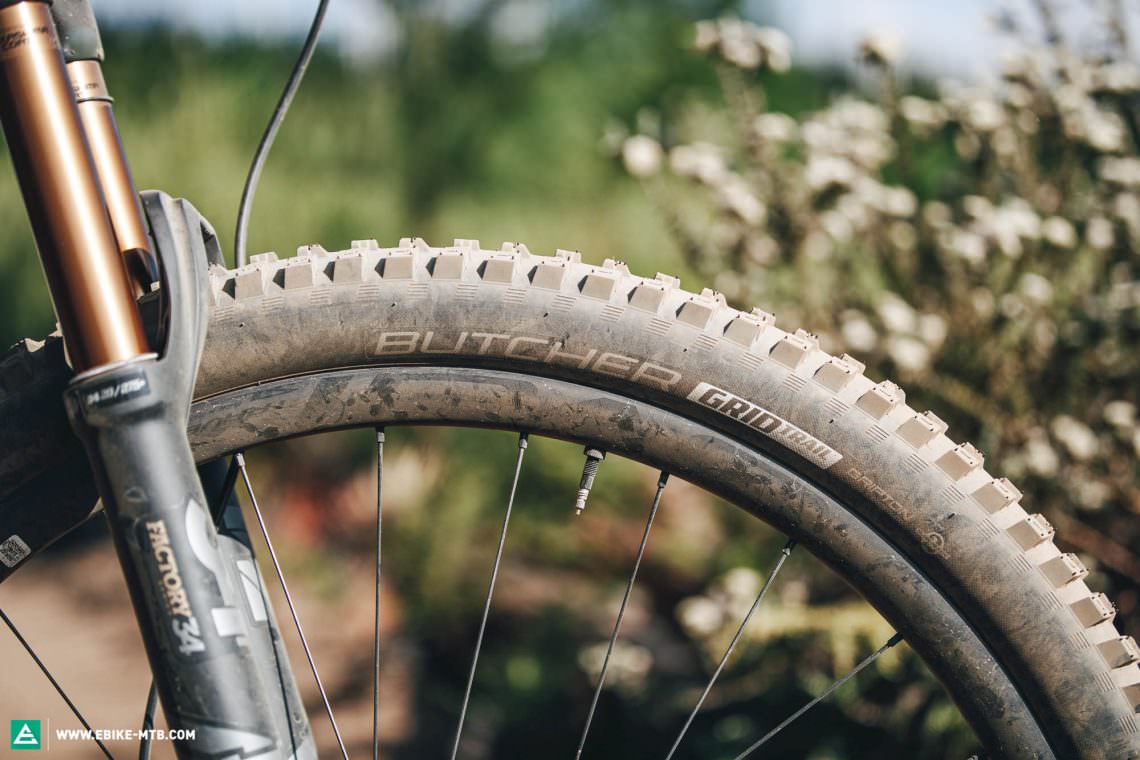

In the air, the Levo SL is very stable and easy to manoeuvre. This caused us to scream for joy when we hit the G spot. Hold on, you’re getting this wrong… G Spot is the name of an incredible rollercoaster singletrack in the South African Stellenbosch.

Most of the components fitted to the S-Works Levo SL, which retails at € 12,999, are perfectly suited to trail use. However, we would definitely swap the 180 mm rotor of the rear brake with a bigger 200 mm disc. On long descents and demanding terrain, more powerful, but also heavier, SRAM CODE brakes would be more appropriate than the SRAM G2 model fitted.

Of course, we understand that Specialized wanted to differentiate the Levo SL from thoroughbred downhill machines like the Kenevo – amongst other reasons, also to save some weight. Still, the Levo SL would look great with a FOX 36 fork and a more powerful rear shock with a piggyback reservoir, even if they are slightly heavier than the standard FOX 34 fork and FOX FLOAT DPS Factory damper. The latter got very hot during our test runs in South Africa, some of which were quite long. Interesting fact: the Levo SL’s motorless antagonist, the Specialized Stumpjumper, features the suspension combo we would have loved to see on the Levo SL: a FOX 36 fork and FLOAT DPX2 Factory shock!

The Levo SL’s range, battery charging times and details on the Specialized Range Extender
“What is the range of the Specialized Levo SL?” This is perhaps one of the hottest questions regarding Specialized’s youngest progeny. If you’re familiar with the complex world of eMTB technologies, you also know that it’s impossible to come up with absolute numbers about the range of an eMTB – there are simply too many factors that influence it. Nevertheless, we’ve spent enough time with the Levo SL to give you a rough idea of what to expect.

In South Africa we took the Levo SL on a number of different rides. Here are the facts:
Riding conditions: trockener, staubiger Untergrund, gelegentlich starker Gegenwind
Rider data: Robin, 178 cm, 75 kg incl. riding equipment
Test bike: Specialized S-Works Levo SL (size L)
Ride #1
Total riding time: 2:34 h
Total distance: 44 km
Altitude gained: 930 m
Total battery consumption: 316 Wh out of 320 Wh
Average support: +115 %
Ride #2
Total riding time: 2:20 h
Total distance: 33 km
Altitude gained: 1.015 m
Total battery consumption: 230 Wh out of 320 Wh
Average support: +82 %
Ride #3
Total riding time: 1:45 h
Total distance: 24 km
Altitude gained: 1.007 m
Total battery consumption: 175 Wh out of 320 Wh
Average support: +93 %
As you can see, different parameters will affect the range in different ways. But these test rides show us that even without a range extender, the Levo SL can cope even with longer rides with over 1,000 m vertical metres.

The Range Extender is great for longer rides and doesn’t bother any more than a water bottle on the trail. With the Range Extender, the Specialized Levo SL allows for many different and interesting usage scenarios. For example, you can ride to the trailhead using the Range Extender, remove it when you get there, hide it safely in a bush and, after several descents, put it back on to make your way home or to the car. During our extensive test sessions, we came to the conclusion that it’s not necessarily advisable to select the “Range Extender First” setting to drain the additional battery before the main one. Below 20% charge, the Range Extender significantly reduces its output, which means the motor delivers less power. At this point, you’ll fall into a “hole” before the main battery activates itself. In the standard setting, both batteries supply the motor with power simultaneously, avoiding the issue.

If you want to charge your Levo SL on a longer ride that requires a Range Extender, you should proceed strategically. According to Specialized, it takes about 2:30 h to fully charge the 320 Wh internal battery, and about 2:30 h for the 160 Wh Range Extender. Charging both batteries at once will take 3:20 hours using the optional Y-cable adapter.
The Range Extender has another advantage – you can go travelling with it because 160 Wh is exactly the maximum capacity allowed on commercial flights. If you want to fly to your cycling holiday destination, we recommend asking your official dealer to remove the internal battery and feed your Levo SL just on the Range Extender while on holiday. Just to be on the safe side and avoid unnecessary stress at the check-in desk, confirm with your airline that you’re allowed to keep the Range Extender in your hand luggage. If so, ask them how many you’re allowed to take with you – most companies, will allow a maximum of two per person. Since the range extender weighs just 1,050 g, a little more than a full water bottle, you can easily put a second Range Extender in your backpack while riding (watch your back protector though!). This gives you a total of 320 Wh.
If you’re hoping to use the Range Extender on your Levo, you’ll be disappointed. The Levo SL batteries have different connectors and work on a different voltage.


Conclusions
In a time where brands are constantly trying to outsmart the competition with more powerful motors and bigger batteries, Specialized take a different approach and show us what we really need to experience maximum trail fun. The Specialized Levo SL looks like a mountain bike, rides like one (in many ways even better) and offers a smart and unique ecosystem made up of excellent motor performance, a thoughtful battery concept and modular range extender, as well as great integration, customization options and app connectivity. After countless test kilometers we can confidently say that just like the suspension fork, disc brakes and dropper posts did in the past, the Levo SL will revolutionise mountain biking in its own way and open up new horizons for both analogue and electric mountain bikers alike. Here are just a few reasons to try one:
Who is the Specialized Levo SL designed for?
- Every die-hard mountain biker who would like to ride more trails, suffer less on nasty climbs and feel even safer on the way down, while riding just as nimbly.
- Anyone who tends to ride with little support and doesn’t use the maximum power of their conventional eMTB often, or at all. According to our 2019 reader survey with over 10,000 participants, only about 5% of our readers use the strongest support level on their eMTB.
- Mixed rides with mountain bikers (partners, friends).
- Structured training – the Levo SL is probably the best and most fun fitness device available. Thanks to the support of the motor and functions such as heart rate control, you can easily monitor your performance and adapt your riding accordingly. And it’s incredible fun as it rides like a trail bike.
- Early adopters who want to experience a new way of riding.
- Light riders, who find it hard to handle a conventional (and heavier) eMTB, whether it’s while riding or loading the bike onto the car rack or taking it to the cellar!
- eMTBers who ride a lot on flat trails and over the 25 km/h threshold and want to use an eMTB to improve their fitness level.
Who is the Specialized Levo SL NOT suitable for?
- Riders who want to be carried up mountains without breaking a sweat or want to show off with their powerful motor.
- Riders who want to cover long distances in the shortest time possible.
- Commuters who want to get to the office with a dry, sweat-free shirt.

Here you can find more about the Specialized Levo SL and eMTB light:
- Specialized Levo SL vs. Stumpjumper vs. Levo in test (Click for review)
- How the Levo SL is changing the face of mountain biking! (Click for ENDURO article)
- Specialized Levo SL Expert Carbon on test (Click for the ENDURO group test)
- Exclusive Review: Lapierre eZesty AM LTD Ultimate (Click for review)
- NOX HeLIUM 5.9 ALL-MOUNTAIN Pro on test (Click for review)
Did you enjoy this article? If so, we would be stoked if you decide to support us with a monthly contribution. By becoming a supporter of E-MOUNTAINBIKE, you will help secure a sustainable future for high-quality cycling journalism. Click here to learn more.
Words: Robin Schmitt Photos: Robin Schmitt, Etienne Schoeman, Gary Perkin, Christoph Bayer









